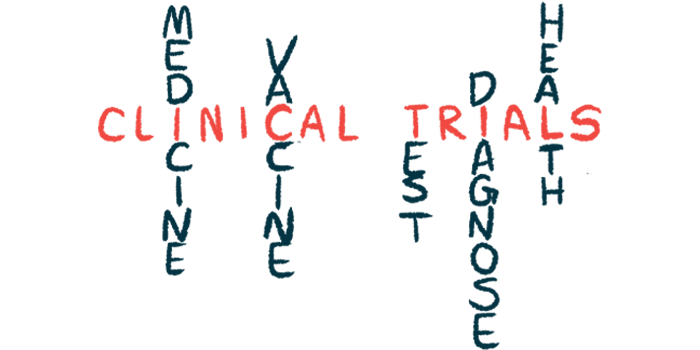Darzalex Faspro combo benefits patients new to MM and transplant
Better progression-free survival with injection therapy plus standard regimen

Adding Darzalex Faspro (daratumumab and hyaluronidase) — a subcutaneous or under-the-skin formulation of Darzalex (daratumumab) — to a standard combination therapy regimen led to significantly better outcomes for people who are newly diagnosed with multiple myeloma and transplant eligible.
That’s according to four-year data from the Phase 3 PERSEUS (NCT03710603) clinical trial, which showed that a Darzalex Faspro-based induction, consolidation, and maintenance regimen significantly lowered the risk of disease progression or death by 58% relative to standard of care.
“We now have evidence supporting this Darzalex-based … regimen as a potential new standard of care in transplant-eligible disease,” Craig Tendler, MD, vice president of late development and global medical affairs at Johnson & Johnson Innovative Medicine, said in a company press release.
Phase 3 trial enrolled 709 newly diagnosed, transplant-eligible patients
Johnson & Johnson markets Darzalex through its pharmaceuticals subsidiary Janssen, which is collaborating with the European Myeloma Network in conducting the PERSEUS trial.
The observed progression-free survival with the Darzalex Faspro-based regimen “is unprecedented in a Phase 3 clinical study evaluating this patient population,” said Pieter Sonneveld, MD, PhD, a PERSEUS investigator at the Erasmus University of Rotterdam in the Netherlands.
These and other promising trial findings were presented last week at a late-breaking abstract session at the 2023 American Society of Hematology (ASH) Annual Meeting and simultaneously published in The New England Journal of Medicine. The study was titled “Daratumumab, Bortezomib, Lenalidomide, and Dexamethasone for Multiple Myeloma.”
Darzalex is an antibody-based therapy designed to destroy myeloma cells by targeting a protein called CD38, which is commonly present in these cancer cells. It’s approved in the U.S. either alone or in combination with other medications in people with newly diagnosed or hard-to-treat myeloma.
The international Phase 3 PERSEUS trial enrolled 709 adults with newly diagnosed multiple myeloma who were eligible for standard autologous stem cell transplant.
All received standard induction therapy (before transplant) and consolidation therapy (after transplant) with Revlimid (lenalidomide), Velcade (bortezomib), and dexamethasone, followed by maintenance therapy with Revlimid. Half also received Darzalex Faspro on top of the standard induction, consolidation, and maintenance therapies.
The use of subcutaneous injections rather than Darzalex infusions, along with the administration of induction and consolation therapy in 28-day cycles rather than 21-day cycles, were meant to lower treatment burden and side effect rates for patients, the researchers noted.
Estimated 4-year, progression-free survival rate of 84.3% with Darzalex Faspro
After a median of nearly four years, more than a quarter (29.1%) of patients given the standard therapy alone experienced disease progression or died, compared with 14.1% of those given the Darzalex Faspro combo, results showed.
The estimated progression-free survival rate at four years was 84.3% with Darzalex Faspro and 67.7% without it, reflecting a 58% lower risk of disease progression or death when Darzalex Faspro was added to the standard combo.
“We were not surprised to see the difference with the addition of [Darzalex Faspro], but we were very surprised by the magnitude of the difference between the two [groups],” Sonneveld said in an ASH press release. This magnitude of difference “is of major clinical significance to the patient in terms of their well-being and [remaining] disease-free.”
The Darzalex Faspro combo also associated with significantly greater proportions of patients achieving complete responses or better (87.9% vs. 70.1%) and being negative for minimal residual disease, or MRD, (75.2% vs. 47.5%) compared with the standard regimen.
MRD refers to the small number of cancer cells that remain in a patient’s body after treatment, which can drive disease relapse and progression.
Twice as many patients in the Darzalex Faspro group also showed sustained MRD-negativity for at least one year relative to those on standard care (64.8% vs. 29.7%).
“The results we see across clinically relevant subgroups, including in patients who present with advanced disease or who are considered high risk, are promising for clinicians … treating patients who are newly diagnosed with this complex disease,” Sonneveld said. He expects this new regimen will become the standard of care for newly diagnosed, transplant-eligible multiple myeloma patients.
Overall survival rates with either treatment combo are not yet available
As of the data cutoff date, 34 patients in the Darzalex Faspro group and 44 in the standard therapy group had died. Since the vast majority of participants were still alive, it was not yet possible to calculate overall survival.
The safety profile of the Darzalex Faspro combo was overall consistent with the known profiles of Darzalex Faspro and the standard therapy regimen. Virtually all patients experienced side effects, such as diarrhea, nerve damage, constipation, fever, or insomnia.
Serious safety issues such as low blood cell counts and infections also were common in both treatment groups, as expected given a fairly intense treatment regimen aimed at wiping out cancer cells.
Severe adverse events, as well as serious ones, were slightly more common in the Darzalex Faspro group, but fewer patients in that group discontinued due to such side effects.
Overall, the Darzalex Faspro combo showed “a significant and clinically meaningful benefit … with a favorable benefit-risk profile,” the researchers wrote.
“We are encouraged by these results, and the opportunity to provide one more treatment option for patients,” Edmond Chan, MD, hematology lead for the Europe, Middle East & Africa therapeutic area at Janssen-Cilag, said in a Janssen press release.







